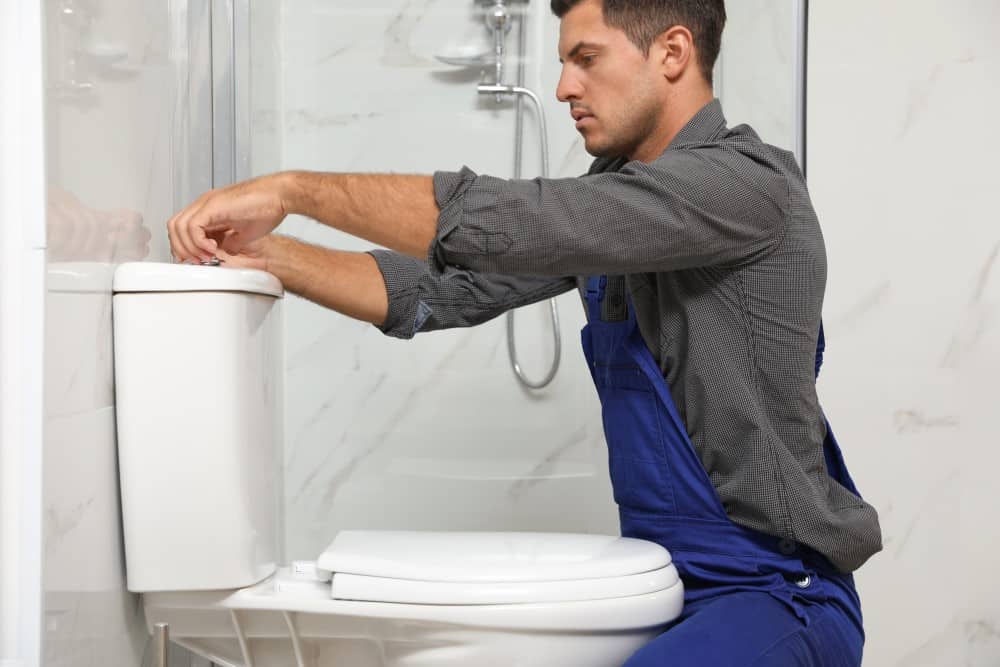
Toilet Troubles: Deciding Between Repair and Replacement
Did you know that most households typically have around three toilets? When faced with a malfunctioning old toilet, the immediate thought might be to replace it.
Determining whether to repair or replace your toilet, or proceed with the installation of a toilet, is crucial. To assist you in this decision, we’ve compiled a comprehensive guide to help you discern the best course of action for your toilet woes. Read on for insights!
Identifying When to Replace an Old Toilet in Your Ottawa Home
Understanding the nuances of toilet functionality can be tricky without plumbing experience. If you’re considering replacing your toilet, here are key signs to watch for:
Frequent Clogging
Occasional clogging is normal, but frequent clogs can be a red flag. A weak flush can lead to clogs, affecting the overall efficiency of your drain pipes.
Regular clogging, such as more than once a week, might indicate mineral deposits accumulating at the top of the drain. These deposits cling to pipe sides and harden, obstructing water and waste flow. An older or low-flush toilet may lack the power to clear these deposits.
If you’re uncertain about the cause of the clogs, consider hiring a drain cleaning service for a professional assessment. If your toilet continues to clog even after cleaning the pipes, it’s likely time to invest in a new toilet.
Dealing with Cracks in Your Toilet
Porcelain, commonly used for toilet tanks and bowls due to its durability, waterproofness, and sanitary properties, isn’t infallible and may develop cracks, potentially leading to leaks. Even minor hairline fractures can expand over time, compromising your toilet’s structure. Regularly inspect for any signs of leaks or cracks, especially around the wax seal at the toilet’s base and both inside and outside the tank and bowl. An actively leaking crack necessitates immediate toilet replacement to prevent potential flooding and damage to your bathroom flooring.
Unexpected Rise in Water Bills
An unexplained increase in your water bill could be attributed to an inefficient toilet. Older toilets often require more water for flushing, which can lead to higher water usage. Even if there are no apparent performance issues, an outdated high-consumption design might be the culprit. Replacing an older toilet with a more water-efficient model is an effective way to reduce your water bill.
Toilet Stability Issues
A toilet that moves, wiggles, or wobbles when you sit on it is a warning sign. This instability might indicate improper sealing or installation, risking damage to your plumbing or home’s structure, and even leading to significant leaks. Before considering replacement, check if tightening the seat bolts resolves the issue. If the problem persists, it could be more serious, such as an ongoing leak causing floor damage.
In such cases, refrain from using the toilet and consult a professional plumber. They can assess whether the issue is fixable or if a replacement is necessary, ensuring your toilet is safe and functional.
Deciding on Toilet Repair or Replacement
If you’re dealing with an old toilet, sometimes the dilemma is whether to repair or replace it. Minor repairs, such as changing the flapper, fill valve, or handle, are often affordable and straightforward. However, more extensive repairs or issues like cracks can make rebuilding costly. Weigh the costs of a new toilet against the expenses of repairs. Major issues might warrant a replacement, which could be more economical in the long run and prevent future water damage.
Noticeable Wear and Tear
Porcelain toilets may show signs of wear over time, such as visual scratches, making them harder to clean. If you’re finding yourself cleaning your old toilet more frequently, it might be time to consider a replacement.
When Repair is the Better Option
If your toilet’s issues aren’t as severe as those mentioned, repair might be the more suitable choice. Problems that typically require repair include faulty flushing, a tank or bowl not refilling properly, standing water at the base, a constantly running toilet, rust on metal parts, a slow-refilling tank, or issues with the toilet handle. Regularly cleaning your toilet, using porcelain-safe cleaners, and watching what you flush are essential for maintaining its condition.
Consulting a Professional
Toilets might seem simple, but diagnosing problems can require expertise. Many toilet components are fixable or replaceable with professional help. If you’re uncertain about whether to repair or replace your toilet, a consultation with a plumber can be invaluable. They can offer insights and solutions to ensure your toilet functions well without causing significant damage.
Credit : Source Post






